During Polar Pioneer’s explorations of the coasts of Svalbard and Greenland on our August 7-20th 2016 cruise, we sailed past dozens, perhaps hundreds, of glaciers. They were so varied in size, form, and even color that we never tired of looking at them…or taking photos!
- As the sun rose higher, mist lifted off the glacier to shroud the mountains.
- Even when we weren’t touring glacier fronts in small boats, distant examples were often visible from our portholes.
- Our Zodiacs stayed back far enough to avoid becoming involved in a calving event!
- A glacier wraps a mountaintop.
- A glacier striped with ribbons of dirt and rock being carried down from the mountains.
- A glacier carves its own valley down to the water’s edge.
- Meltwater burbles in a small stream from under the lip of this dirt-encrusted glacial front.
- Cruising along glacier fronts in Zodiacs was one of our daily activities.
- The arch in this glacier front probably marks the spot where an iceberg calved.
- Our onboard naturalist Gary stands in front of a glacier face so covered with dirt it looks like a mountainside.
- Trish touches the face of a glacier on one of our Zodiac landings.
- A glacier on the move is a river of ice.
A glacier forms when snow falls (and does not melt away) year after year after year and compacts into ice under its own weight. Over time this ice moves like a frozen-solid river, pushed along by its own weight. The glacier slides along on meltwater created by the friction of its movement over the rocks. The ice wears away chunks of mountain over time, forming miles-wide fjords and smaller u-shaped valleys.
When the enormous tongue of ice reaches water, it starts to float. The floating leading edge of the glacier moves faster than the ice still resting on the ground. Giant cracks and chasms are created as the waterborne part pulls away from the main body. Periodically huge blocks at the leading edge break off altogether as icebergs.
This “calving” of icebergs sounds like thunder, so loud that the thrum of a Zodiac’s 55hp motor is no match for it. We heard the sound again and again as we cruised along glacier faces, but we only saw a few calvings.
This was partly because the direction of the sound is deceptive as it bounces off water, mountains, the glacier front, and the icebergs all around our boat, some of which were the size of city blocks. And partly because the glacier fronts are miles wide, so it’s impossible to watch more than one small section.
The action is over in an instant, and unless you’re very close to the new iceberg, you can’t even make out its bobbing and rolling as it finds its new equilibrium.

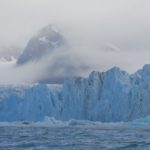

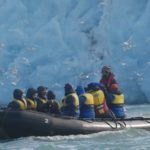
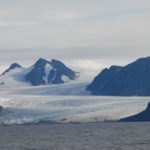
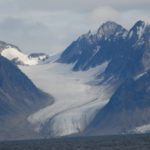
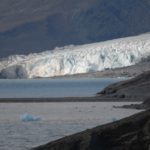
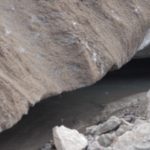

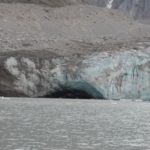

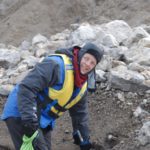

0 Comments
1 Pingback